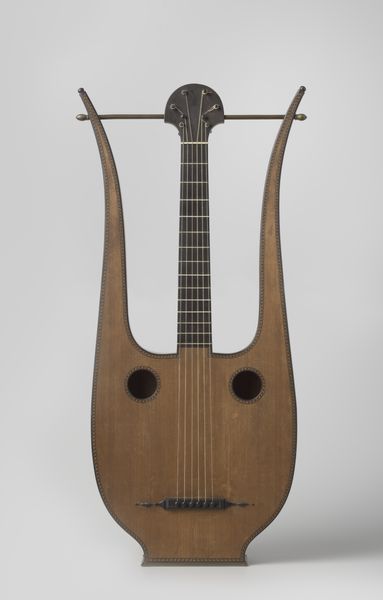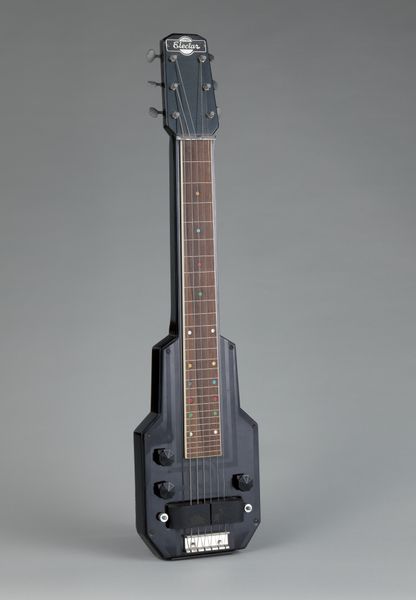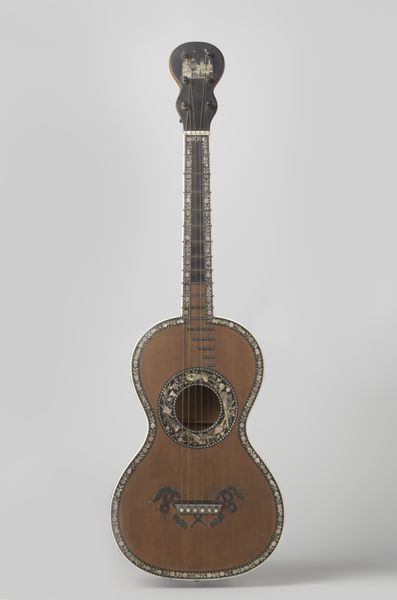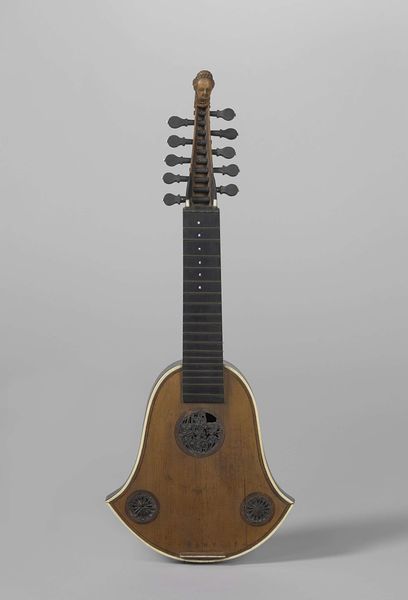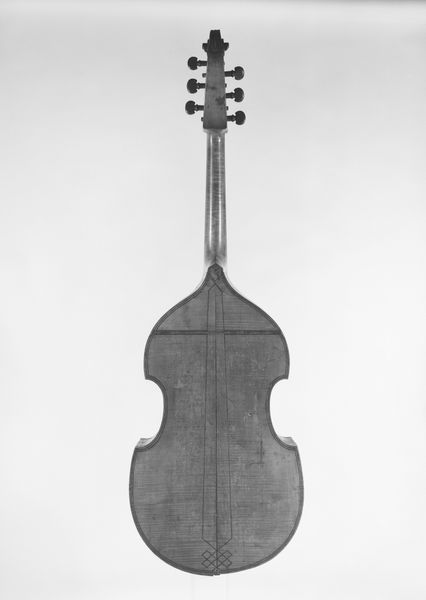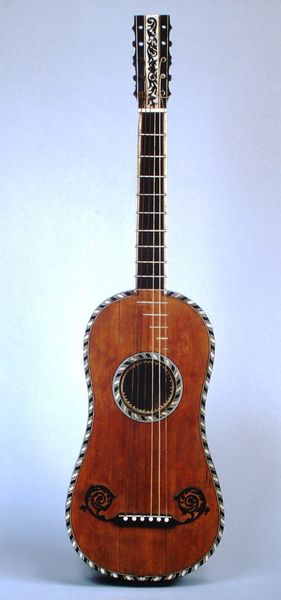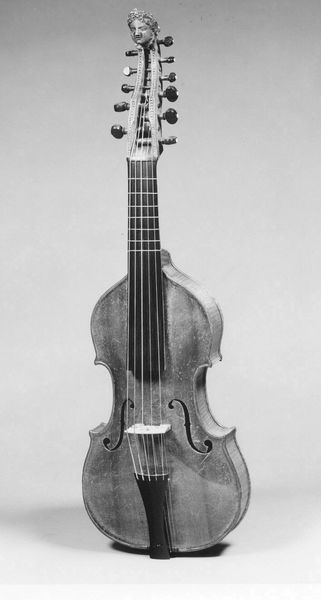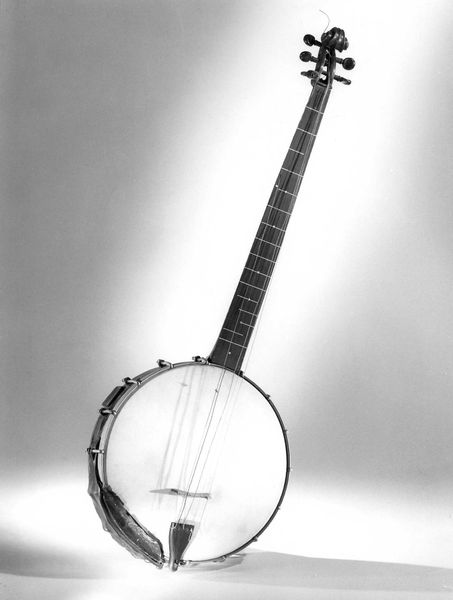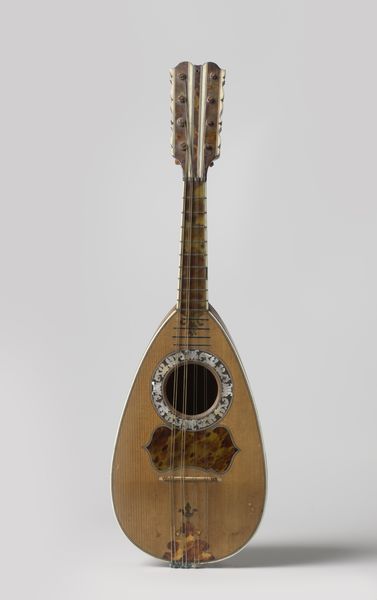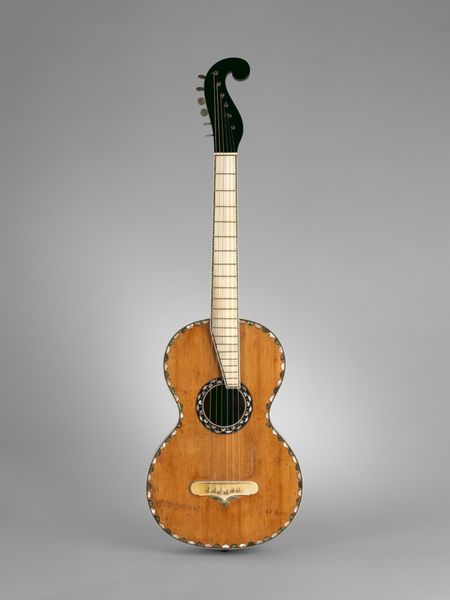
photography, wood
#
sculpture
#
photography
#
romanticism
#
wood
#
musical-instrument
Dimensions: L. 36 in. L. of fingerboard (nut to base) 39.8 cm W. of fingerboard at base 5.9 cm L. of body 43. cm W. of body at widest 33.1 cm D. of body at neck 7.2 cm, at foot 9.2 cm L. of Strings vibrating 65.1 cm Diam. of soundhole +/- 6cm
Copyright: Public Domain
This striking lyre guitar was made by Joseph-Louis Germain in 19th century France. It's an example of a hybrid instrument, combining the shapes of a lyre and a guitar, reflecting both classical ideals and contemporary tastes. The lyre guitar emerged during a period when interest in ancient Greek and Roman culture was high. It's visual codes—the lyre shape, the decorative motifs— evoke this classical past, while the guitar's fingerboard and tuning mechanism demonstrate its modernity. Consider the social function of music at this time. The French Revolution had changed the patronage system. Musical instruments such as this one catered to a wealthy bourgeois market that could afford such refined and novel instruments. Makers like Germain sold to a culture that used music as a form of social display and entertainment, often within the domestic sphere. Understanding this object requires that we consult archival resources and musical instrument histories to discover the socio-economic conditions that shaped Germain’s production. Artworks such as this one take on new meanings as we consider their broader social and cultural context.
Comments
No comments
Be the first to comment and join the conversation on the ultimate creative platform.

